

With the forestry industry slated to grow exponentially over the next few years – to over $ 17 billion by 2026, according to a Global Market insights report – heavy equipment for this sector is in high demand across the United States. For both tree management companies with large-scale operations and smaller, independent contractors, this is a great time to invest in new equipment to ramp up business. In other words, forestry bucket trucks, grapple trucks, and chip trucks. Each have a somewhat different application in tree trimming and tree removal work, and which equipment you should choose depends on the kind of job you intend to do. If cutting down and chipping felled trees and branches for easy removal is the route you want to go, then you need to invest in a chip truck.
With it, you also need a wood chipper machine. This equipment will ride along behind the chip truck, create chips out of large pieces of wood, and then shoot those chips into the back of the vehicle for offsite disposal.
In a previous article, we provided the information you need to make a sound decision on a chip truck purchase. (Read it by clicking HERE.) Now we will take a closer look at industrial wood chippers to feed your chip truck and get you on your way with commercial tree management jobs.
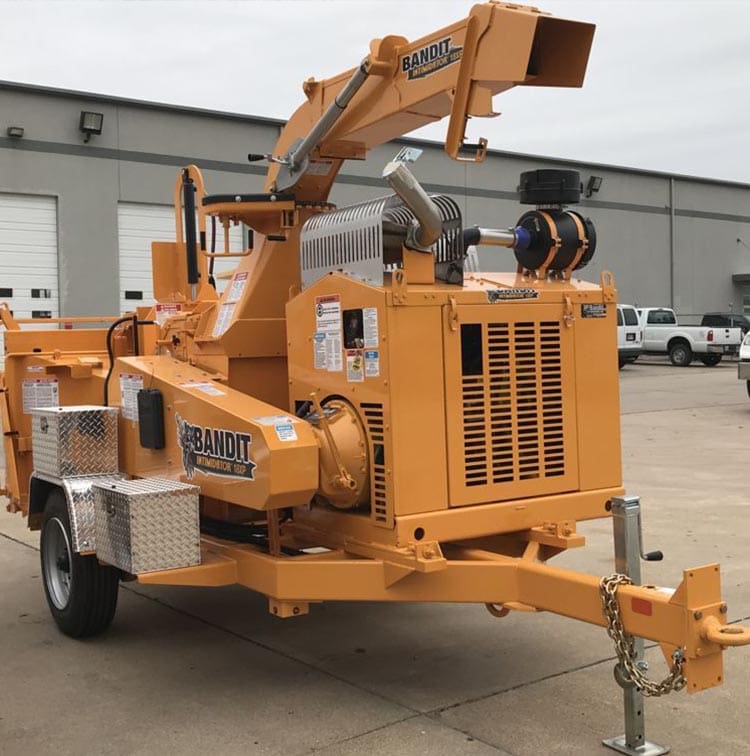
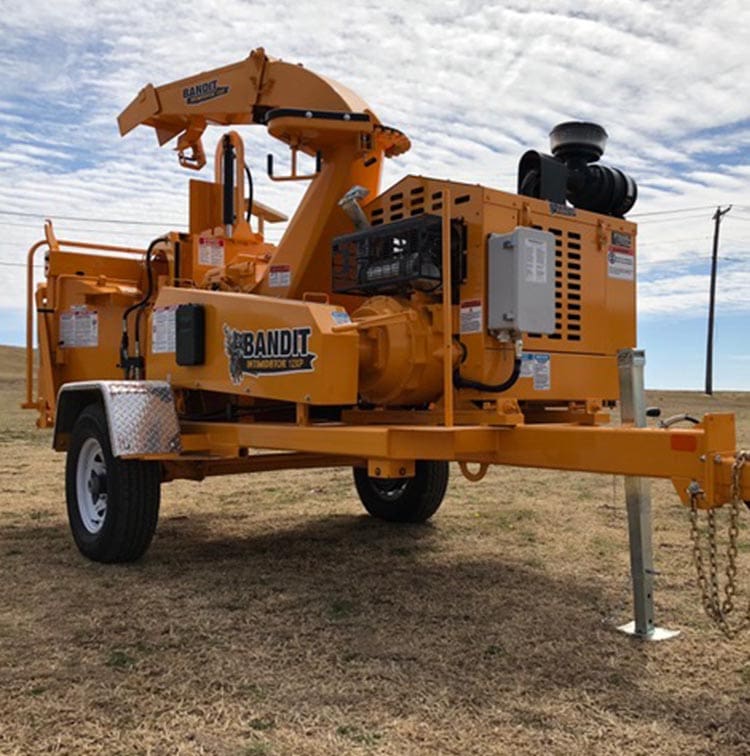
What Is a Wood Chipper?
A wood chipper (also known as tree chipper) is a machine that is used to cut tree limbs, trunks, and branches into chips. They make cleaning up after vegetation maintenance a lot less arduous. Trucks can carry a much bigger load when the wood has been broken down this way, so the time, manpower, and budget required to complete a forestry job is significantly reduced with a wood chipper.
Chippers are portable and mounted on wheels so they can be towed behind chip trucks, with which they work in tandem. An internal combustion engine provides them power, from 3 horsepower (2.2 kW) to 1,000 horsepower (750 kW). A higher grade of chipper that handles large-scale jobs may be mounted onto trucks. Typically, these models also have a hydraulic crane.
Pieces of brush and wood are fed into a hopper with a safety collar, which slides them into the actual cutting mechanism (blades set on a rotating impeller). The wood is then spewed out as chips into a chip truck’s dump container via a chute. The size of individual chips depends on the configuration chosen on the chipper.
Disc Chippers and Drum Chippers
The original chipper design is the disc chipper, which has blades mounted on a steel disc as its chipping mechanism. Reversible, hydraulically powered wheels draw wood from the hopper to the disc, and as the disc spins, the blades cut the wood into chips. The material diameter capacity of consumer-grade disc chippers ranges from 6 to 18 inches, whereas industrial-grade capacities can be as large as 160 inches in diameter.
Commercial tree care companies often opt for the disc design, and many operators say that they produce more uniform chips than the drum chipper. However, small, flexible branches may pass through the disc slots and result in poor chip quality.
Drum chippers use a newer system that involves a steel drum (powered by a motor), located parallel to the hopper, that spins towards the output chute. The drum also functions as the feed mechanism, drawing the material through as it chips.
The drum chipper can not only chip big logs of wood, it can also process small tree branches and fibrous material (like palm trees). It has a compact structure and is reliable and easy to operate.
The main parameter of chipper technology is the length of the wood chips. So, you can evaluate its performance by checking the quality of the chips produced. When wood chip size is balanced and the detritus and chump content is low, then you have a good quality product.
What Are the Subclassifications of a Wood Chipper?
• Wood Shredder: Smaller than a chipper with semi-blunt blades. The difference between a wood chipper and a wood shredder is how they break down material. While chippers break down branches and larger limbs, shredders will work on smaller vegetation debris, like leaves, making mulch and compost.
• Chipper Shredder: Combines the functions of shredding and chipping.
• Stump Grinder: Professional-grade woodcutter machine that grinds tree stumps, using a multi-toothed cutting wheel, into mulch and sawdust.

Regular maintenance work is necessary for wood chippers, which, by their very function, are dangerous machines. Never ignore the manual that comes with your unit.
General upkeep for chippers includes:
• Greasing moving parts at regular intervals
• Replacing oil and changing the oil filter as per the manual’s directions
• Replacing or cleaning the air filter
• Changing the spark plug
• Rotating the blades and replacing them as necessary

What is the maximum size of wood the chipper can chip? Smaller machines will allow wood pieces with a diameter of 2-3 inches to pass through them. Commercial-sized machines can handle pieces as large as 160 inches.
A commonly held belief is that more blades (known as flails) in the chip chamber means more chipping power. But even a single-blade can do a better job than multiple-blades if its quality is significantly superior.
Smaller machines, for non-commercial use, usually have an electric motor. But if you’re looking at pro machines, they will be gas-powered. So, the advantages of choosing an electric chipper – lower maintenance, fume-free operation, and cheaper price – are not relevant for buyers who need an industrial/commercial-sized unit to handle large-scale jobs.
• Drawbars for towing
• Forward discharge chutes
• Self-sharpening blades
• Integrated collecting bins
• Tilt-down hoppers
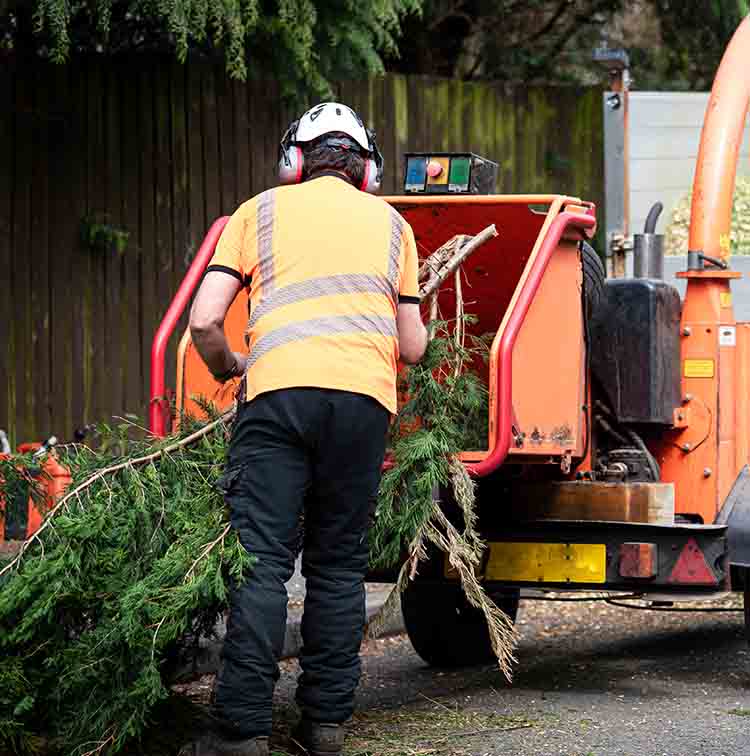
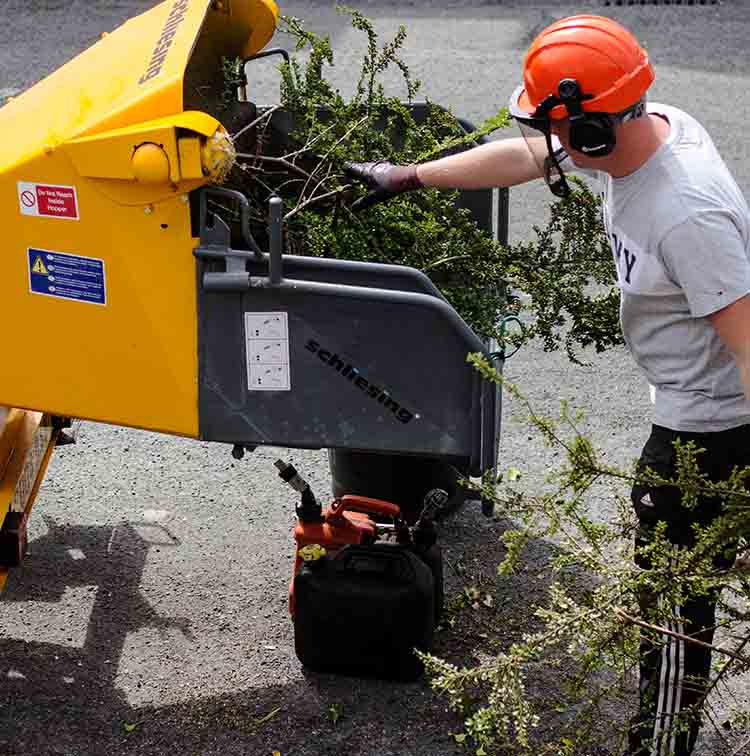
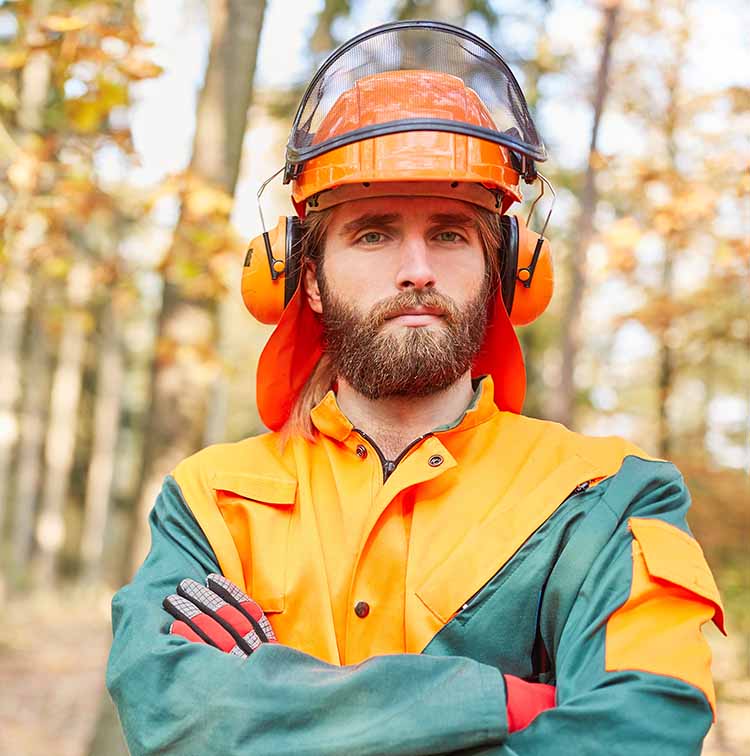
Woodchipper Operation Safety
Industrial chippers are powerful machines that can cause serious injuries if an operator is not being careful while handling or feeding it. Here are some safety factors that should always be kept in mind:
• Don’t force in more tree debris than the machine can chip at a time. It won’t expedite the work, and the high-speed blade can push back the extra material, potentially injuring the operator.
• Make sure there are no stones, rocks, metal, etc. in the tree debris you are feeding into the chipper. These may ricochet off the blades and hit the operator.
• Be careful about putting your hands near the mouth of the hopper. Use a long piece of branch, if necessary, to push material in.
• Wear protective gear when working with a chipper, keeping your hands, eyes, and head safe. Don’t wear baggy clothes that could get sucked into the machine.
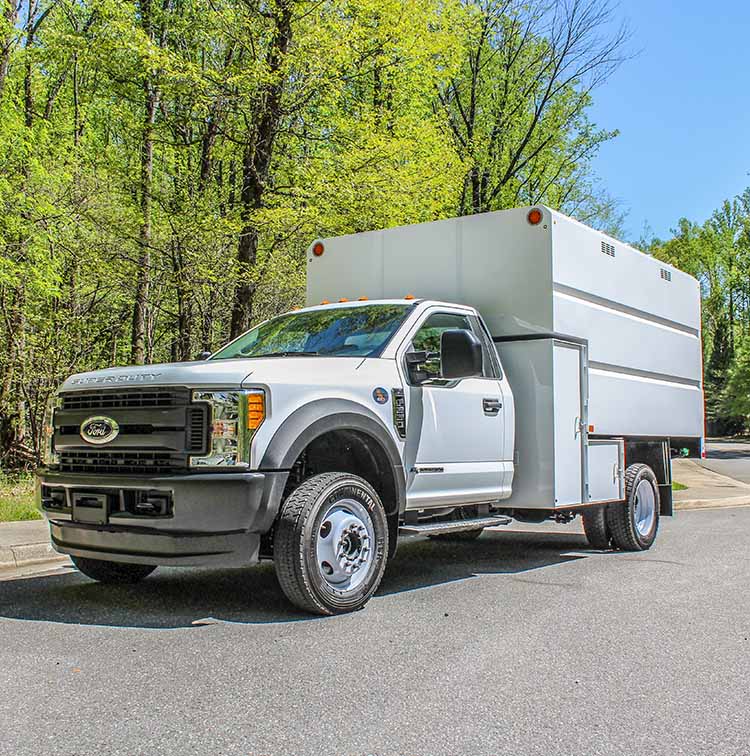
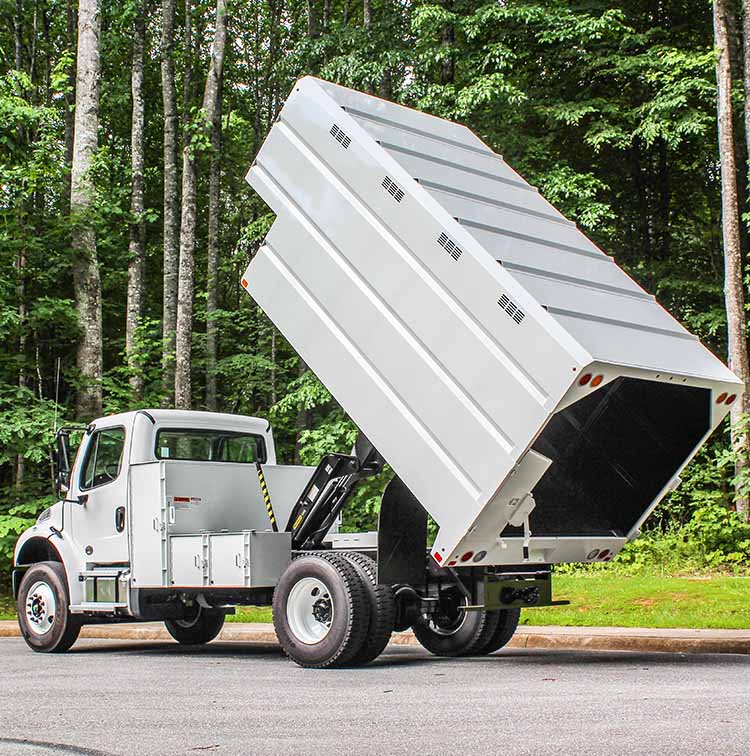
Chippers work in tandem with chip trucks, which carry loads of chips to a dumping location. These trucks are comprised of a chassis and a closed dump container. The container has an opening in the top of the rear wall that the wood chipper’s chute can be aimed at to fill the dump body.
By hauling the collected chips offsite, they eliminate the need to burn debris and help to recycle wood chips as mulch, compost, biofuel, pressed wood, etc.
When shopping for a chip truck, consider the geographical area you’re going to work in. If you’re working inner city, for example, a smaller truck would make the most sense for easier maneuverability. The scale of jobs you expect to be doing will dictate the size you select. A smaller chip truck will use less fuel than a large one. But if your dump location is far away, you may want a larger truck to reduce trips back and forth.
Custom Truck One Source has you covered!
We’re America’s first true single-source provider of specialized truck and heavy equipment solutions, and we’re standing by to help you!
Call us at 844-282-1838 or email us at [email protected].